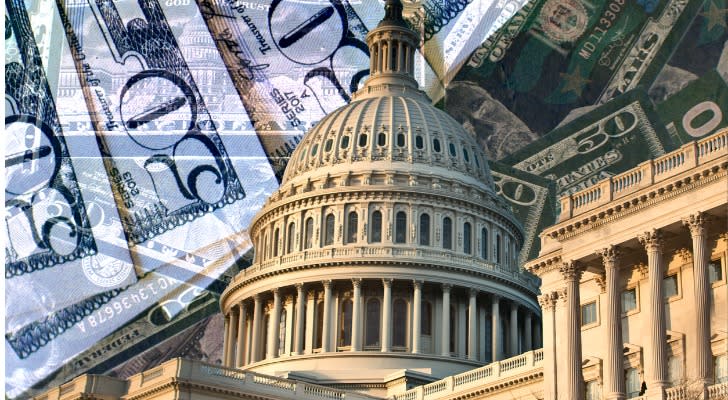
President Joe Biden and House Speaker Kevin McCarthy (R-Calif.) reached an agreement in principle to raise the U.S. debt ceiling over the weekend, allowing a glimmer of hope to shed a peek through the fiscal cloud that hung over DC. This agreement would avoid a potential default, which many economists believe would be catastrophic. Here’s what you need to know about the deal.
A financial advisor can help you prepare for potentially difficult economic times.
Debt Ceiling Agreement Basics
The debt ceiling is simply the maximum amount the US government can owe by law. The current borrowing limit is $31.4 trillion. This figure was reached in January.
In an interesting twist, the proposed deal suggests a two-year suspension of the debt ceiling instead of just raising it. This would mean that the contentious issue of the national debt ceiling would remain irrelevant until after the 2024 presidential election.
A bipartisan effort with significant implications

If this deal wins the approval of lawmakers on both sides of the aisle, it would give the federal government the ability to borrow money to pay its bills through 2025. However, the path to gaining that support is not is not without challenges.
The proposed deal has a slew of provisions, including several Republican-favored spending cuts, as well as defense and veterans spending increases.
If you’re ready to be matched with local advisors who can help you achieve your financial goals, start now.
Neither the Republicans nor the Democrats got exactly the deal they wanted, so both parties will have to sell out their most hardline members by agreeing to this proposal.
The impact of the agreement on programs and services
One of the most notable aspects of this debt ceiling deal is full funding for veterans’ medical care, a provision that is consistent with Biden’s proposed 2024 budget. There are also suggested revisions to the Supplemental Nutrition Assistance Program (SNAP or “food stamps” as they are commonly called).
At the same time, the agreement provides for certain reductions in funding. This includes withdrawing new hires from the Internal Revenue Service and recovering about $30 billion in unspent COVID-19 relief funds.
Controversy and consequences
The specter of a potential default, if the deal is not reached, carries the risk of significant global economic disruption.
Experts have sounded the alarm over the fallout from such a situation, which could range from an international financial crisis to a domestic recession. A ripple effect that would likely lead to job losses, soaring borrowing and possible erosion of household wealth.
The essential
A potential debt ceiling deal has been reached between House Speaker Kevin McCarthy and President Joe Biden. The deal would cut some spending, but not as much as Republicans initially wanted. If approved, the deal would eliminate the debt ceiling for the next two years.
Tips for managing your retirement
To avoid problems such as Social Security insolvency and lack of Medicare benefits, Americans must prepare for retirement through proactive measures. A financial advisor is a smart choice when putting together a strategy that will give you an action plan for your financial future after your years of work. Finding a financial advisor doesn’t have to be difficult. SmartAsset’s free tool connects you with up to three vetted financial advisors who serve your area, and you can interview your advisors for free to decide which one is right for you. If you’re ready to find an advisor who can help you achieve your financial goals, start now.
To see if your retirement plan is on track, check out SmartAsset’s retirement calculator.
Photo credit: ©iStock/Douglas Rissing, ©iStock/wildpixel
The post What the Tentative Debt Ceiling Deal Means For You appeared first on SmartAsset Blog.